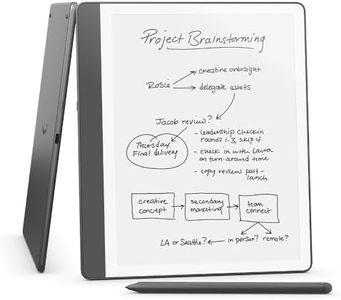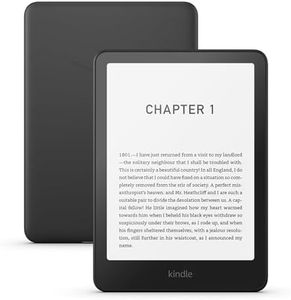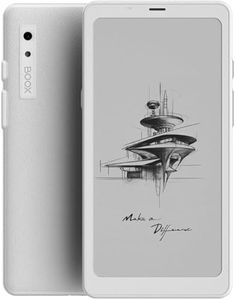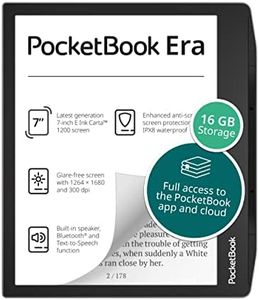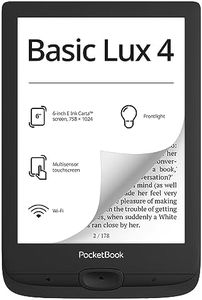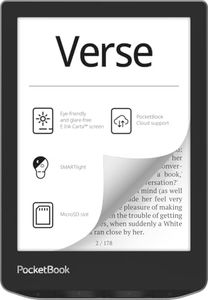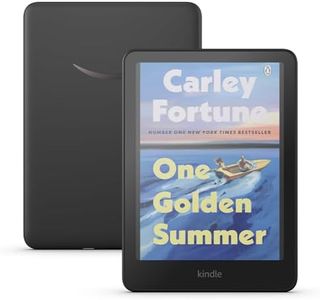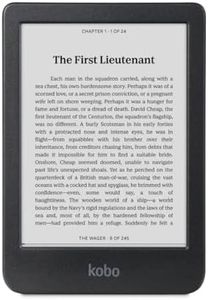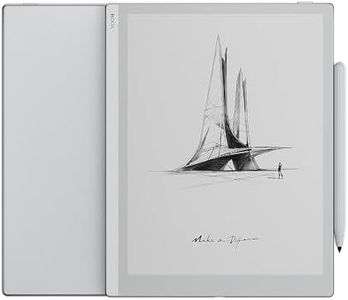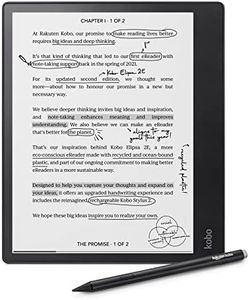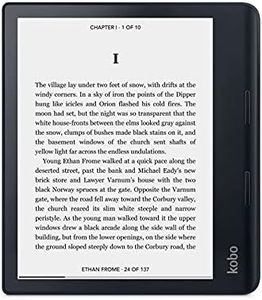We Use CookiesWe use cookies to enhance the security, performance,
functionality and for analytical and promotional activities. By continuing to browse this site you
are agreeing to our privacy policy
10 Best Ereader
From leading brands and best sellers available on the web.Buying Guide for the Best Ereader
Choosing an ereader can be a fun experience, especially if you love reading and want the convenience of carrying many books in a small, easy-to-use device. The right ereader for you will depend on how you like to read, where and when you read most often, and any special features you find helpful or enjoyable. Understanding the main specifications will help you narrow down your choices and make sure what you buy fits your reading habits perfectly.Screen SizeScreen size refers to the diagonal measurement of the display and is usually measured in inches. It's important because it determines how large the text and images will appear, as well as how much content fits on a page. Smaller screens (around 6 inches) are very portable and lightweight, making them easy to hold for long periods or slip into a small bag—ideal if you read mostly novels or need a travel companion. Larger screens (7 inches or more) show more words per page and can be more comfortable for reading PDFs or graphic-heavy content, but are less pocketable. Consider where you do most of your reading and the types of books you prefer when choosing screen size.
Display TypeMost ereaders use E Ink displays, which are easy on the eyes and look similar to paper, reducing glare and eye strain. Some higher-end devices offer upgraded E Ink screens with better contrast or color, increasing readability or making images pop. Pay attention to whether the display is basic black-and-white, higher contrast, or color: basic works well for most text-based books, but if you like comics or graphic novels, you might want a color display. Choose a display that suits your reading needs—if you mostly read traditional books, a standard E Ink display is usually sufficient.
Front Light/Back LightThis feature allows you to read in low-light conditions or in the dark by providing built-in lighting for the screen. The light usually shines from the front, creating a comfortable and adjustable reading experience. Some models offer basic lighting, while others let you adjust brightness and color temperature (warmer or cooler tones). If you often read at night or in dim places, an adjustable front light is essential. If you always read under good lighting, this may be less of a priority.
Storage CapacityStorage capacity indicates how many books or documents your ereader can hold. Entry-level devices typically offer several gigabytes, enough for thousands of ebooks. Higher capacities are helpful if you like storing audiobooks, graphic novels, or large PDF files, which take up more space. Most readers never fill up even a basic ereader, but if you want to carry a huge library or lots of formats, consider a device with more storage.
Battery LifeBattery life tells you how long the device can go between charges—typically ranging from several weeks to even months on a single charge, depending on your reading habits and use of features like lighting or Wi-Fi. If you travel a lot or often forget to charge your gadgets, choose one with a long battery life for peace of mind. If you usually read at home and are okay with regular charging, this is less crucial.
Water ResistanceWater resistance means your ereader can handle splashes, rain, or even being dropped in water for a short period. This feature is especially valuable if you read near water—like at the pool, beach, or bath. Devices range from no water resistance, to splash-proof, to fully waterproof. If you often read outdoors or near water, choose a model with a solid water resistance rating. If you mainly read indoors, this is less important.
Format SupportThis refers to the types of ebook, document, and audio file formats your ereader can open—like EPUB, PDF, MOBI, or audiobook formats. Ereaders vary in which formats they support, which can affect where you buy or borrow books and how well they display on your device. If you plan to get books from multiple sources or want to use lots of PDFs or audiobooks, check for wide format support. For most people who buy books from one store, standard support is fine.
Touchscreen and ButtonsEreaders may offer a touchscreen for page turning and menu navigation, physical buttons, or both. Touchscreens are intuitive and let you tap or swipe pages easily, while buttons help if you like tactile feedback or read one-handed, especially while wearing gloves. Consider your preferences: if you want the simplest, most interactive experience, go for touchscreen; if you prefer physical page-turning, look for devices with buttons.
